With alleged speeds of up to 68 mph the sailfish is said to be the fastest animal in the sea. However, recent studies suggest a maximum speed of only 34 mph. That’s still fast for an aquatic animal though, matching other ocean speedsters like the mako shark and killer whale. And with its tall, sail-like dorsal fin, it is one of the sea’s most visually distinct and impressive fishes. The sail is folded down while the fish is swimming and erected while attacking prey. Sailfish hunt cooperatively in groups of up to 20-30 individuals, herding baitfish into tightly packed balls with the aid of their flashy and reflective sails. Individual sailfish then swim into the ball, tapping and slashing at the baitfish with their bill. The sail has been shown to also reduce sideways swinging of the head, which makes the bill less detectable to the baitfish. Sailfish are found around the world in tropical and temperate waters where they prefer to occupy the epipelagic and oceanic zones.
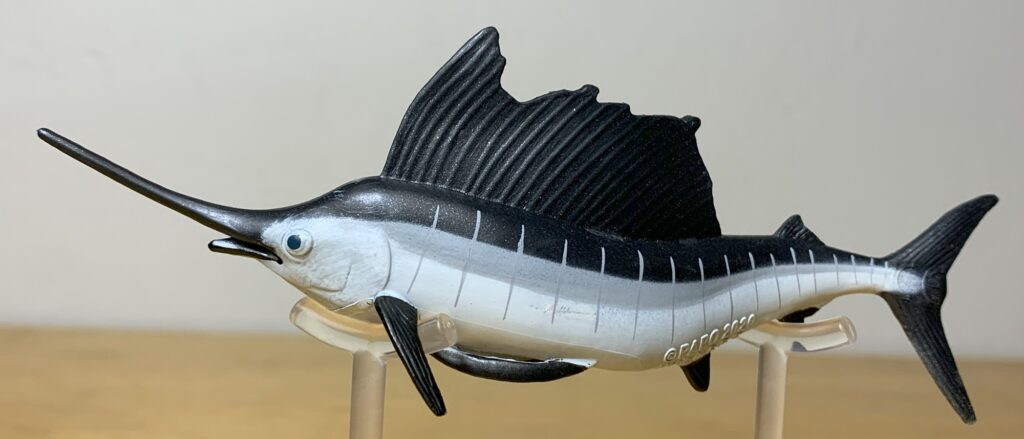
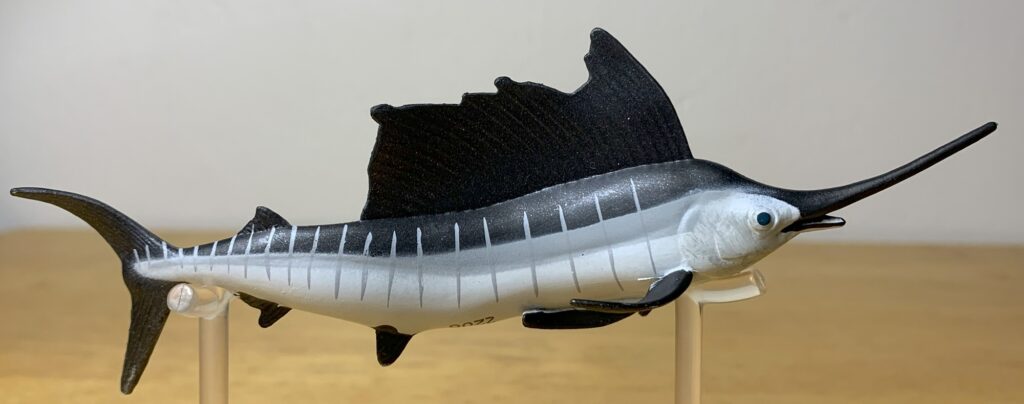
Today we’re looking at the Papo sailfish, released in 2020. There is some debate about how many sailfish species there are, with Fishbase listing the Indo-Pacific sailfish (Istiophorus platypterus) and the Atlantic sailfish (I. albicans) as distinct species even though many experts agree that they’re the same species. I’ll be tagging this figure as I. platypterus, the name that would take priority if we’re to consider them the same species. Sailfish reach an average length of 8’ (2.4 meters) and a maximum length and weight of 11’ (3.3 meters) and 220 lbs (100 kg). Sailfish are measured from the tip of the lower jaw to the fork in the tail and applying this to the Papo model gives us a length of 4.25” (10 cm). This puts the figure in the 1/22-1/31 scale range. In total length the figure measures 5.25” (13 cm).
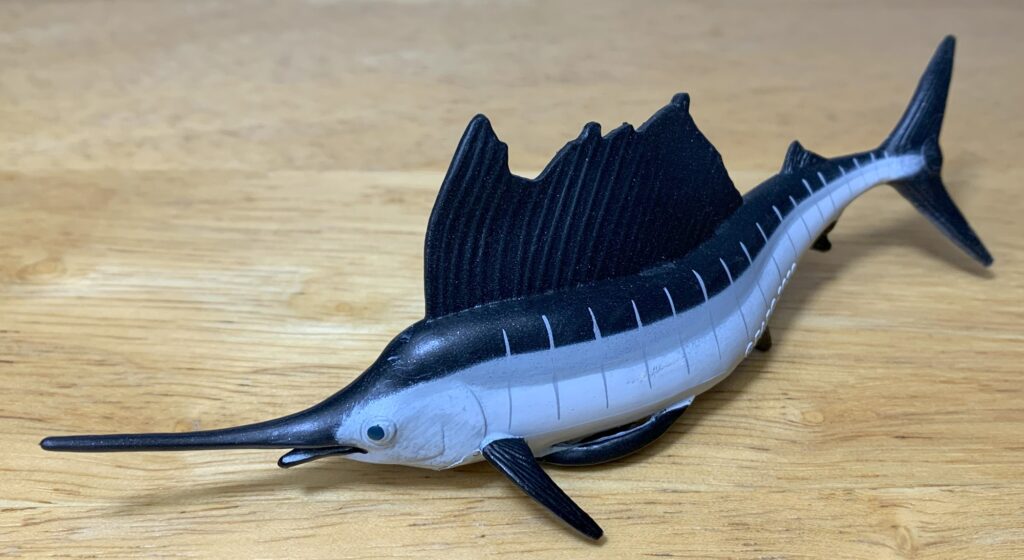
The figure has the elongated upper jaw, large eyes, torpedo shaped body, sail-like dorsal fin, and crescent shaped tail of the actual sailfish. The first dorsal, the “sailfin”, is a bit short and jagged looking along the top edge, and a taller, fuller sail, would have been appreciated. The pectoral and pelvic fins are elongated and narrow and both anal fins are accounted for, with the second anal fin closely mirroring the small second dorsal fin. A double set of keels should be present on each side of the caudal peduncle but aren’t included.


The Papo sailfish is rather dull in coloration, being entirely black, gray, and white. A silver horizonal band and gray vertical bars run down the sides. The dorsal surface and all the fins are painted black while the underside is white. Silvery flecks that sparkle in the light have been incorporated into the paintjob but do little to enhance it and don’t really show up in the photographs.
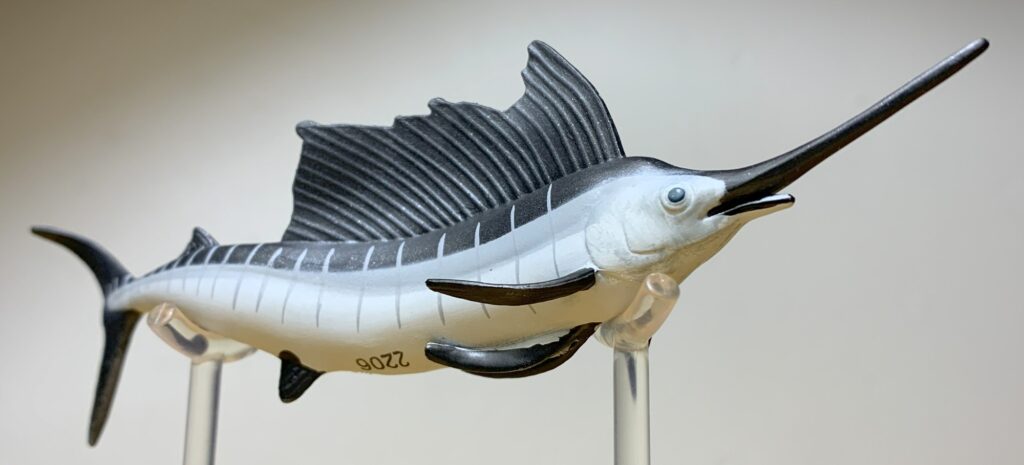
Like many fish species, sailfish possess remarkable color changing abilities. While their neutral colors are gray, blue, and black, they can exhibit remarkable iridescent shades of yellow, green, bright blue, purple, and gold when excited and fired up. Since this is a toy, meant to appeal to kids and collectors, it would have been nice if the figure exhibited the fired-up coloration. At the very least some blue should have been incorporated into the sail and into the bars along the side.
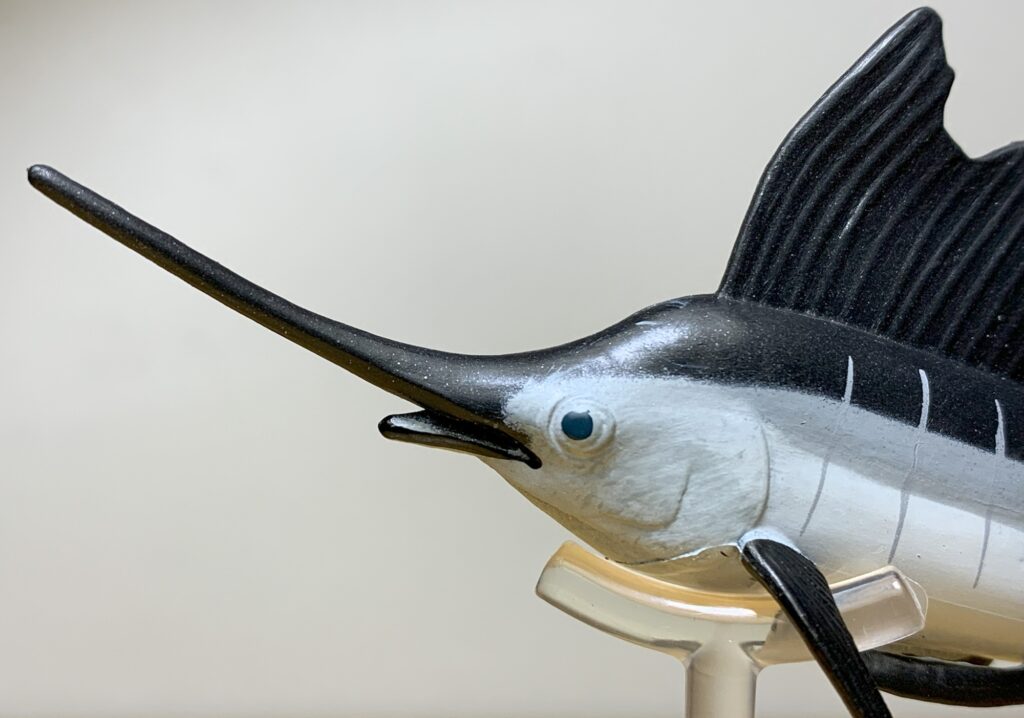
With its jagged sail and dull coloration, the Papo sailfish doesn’t have as much shelf presence as the sailfish figures by Kaiyodo, Chap Mei, or Safari Ltd. but it’s still an adequate figure of a sailfish. Of the standard-sized sailfish figures that exist it’s also the only one still in production. I’m happy to have it but would probably replace it if a flashier option ever presented itself.
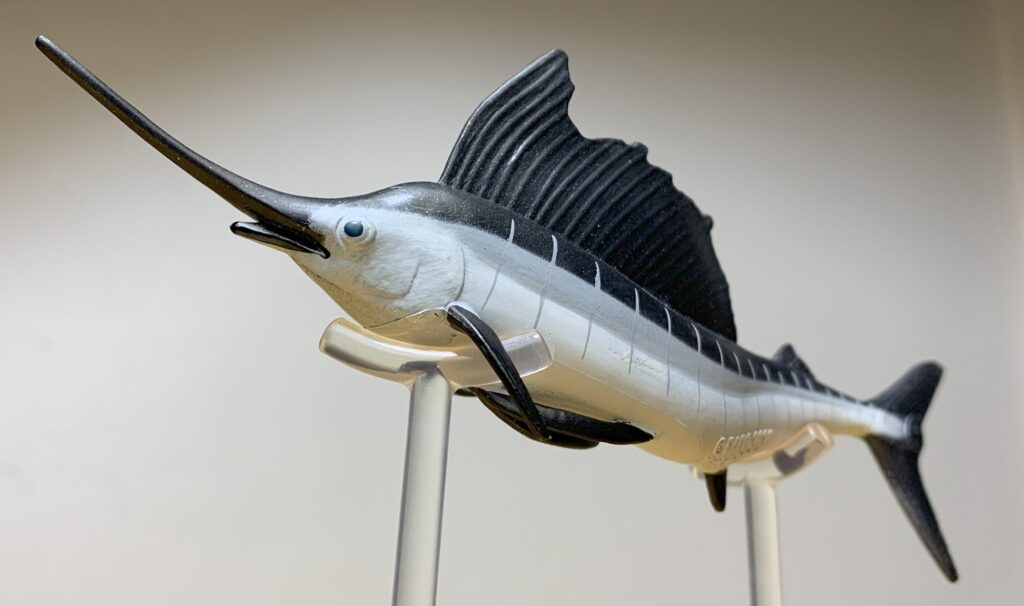
Disclaimer: links to Ebay and Amazon on the AnimalToyBlog are affiliate links, so we make a small commission if you use them. Thanks for supporting us!




I really like this one. I don’t understand why companies aren’t making lots of sailfish and swordfish and marlin toys.